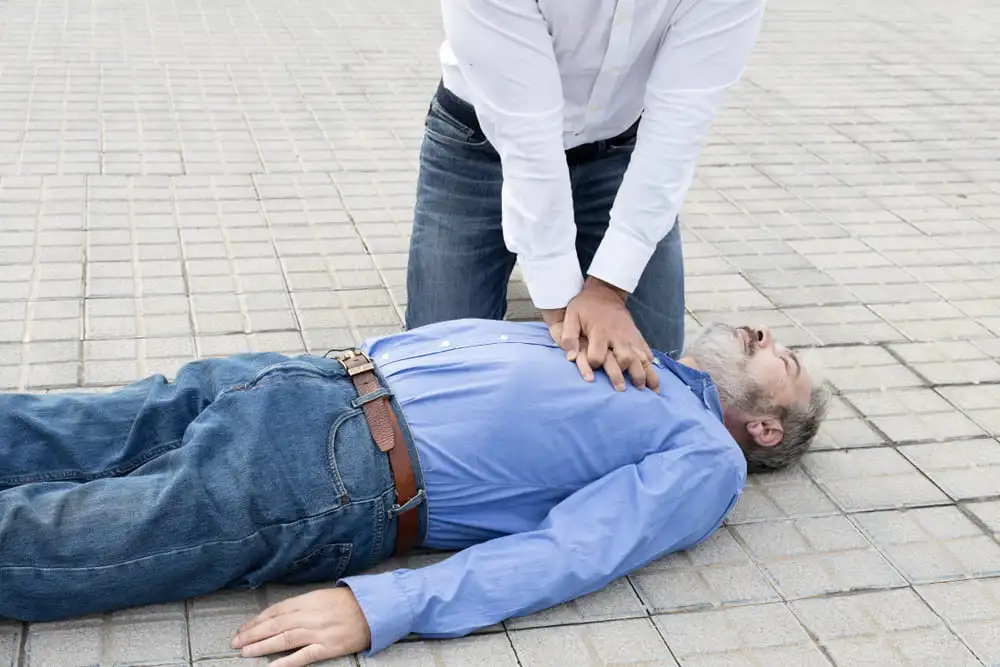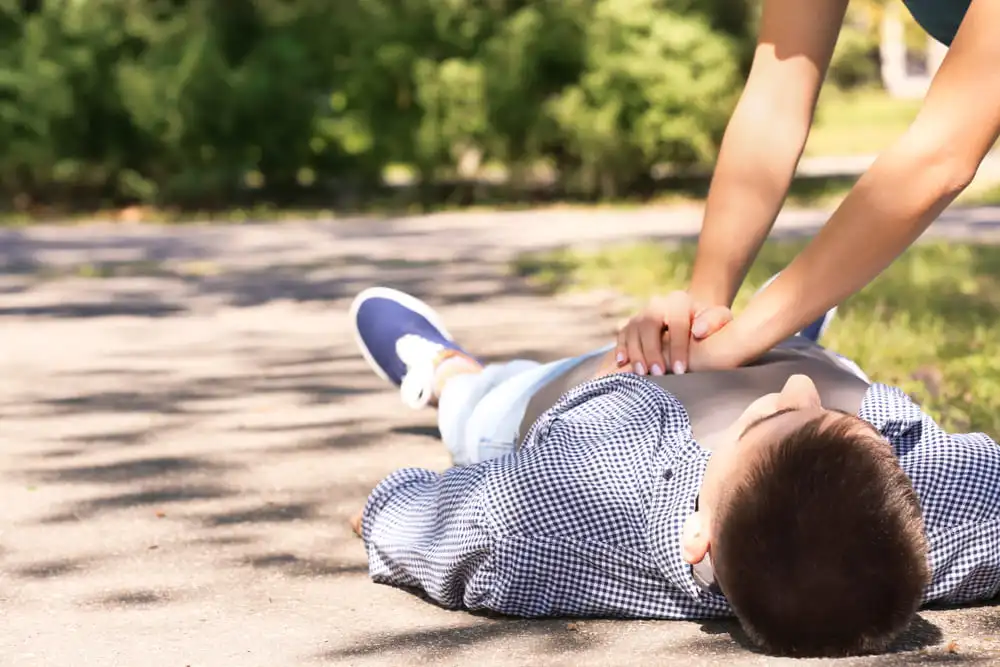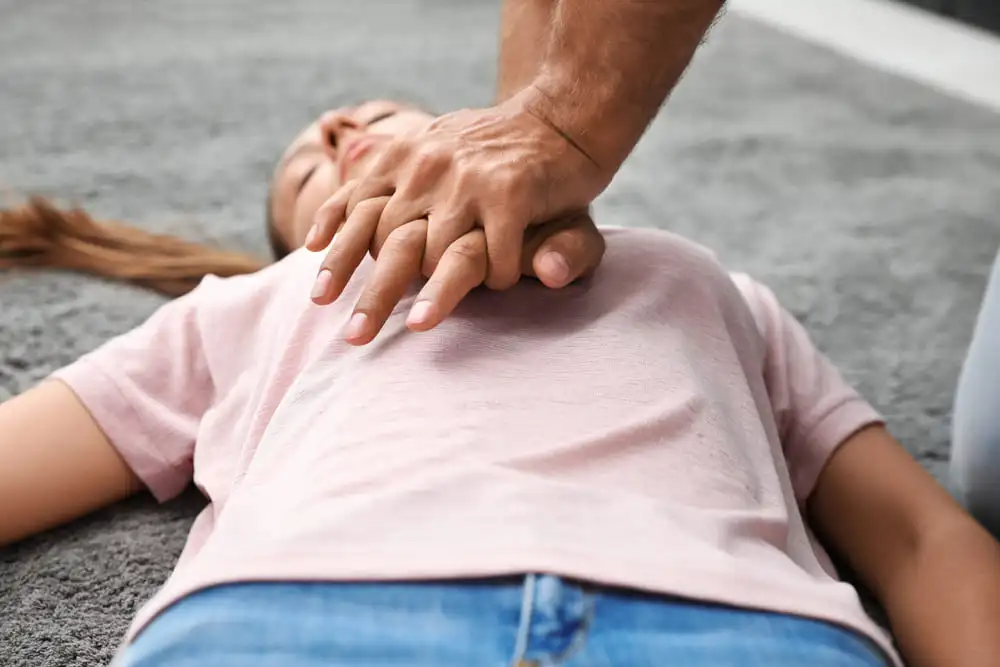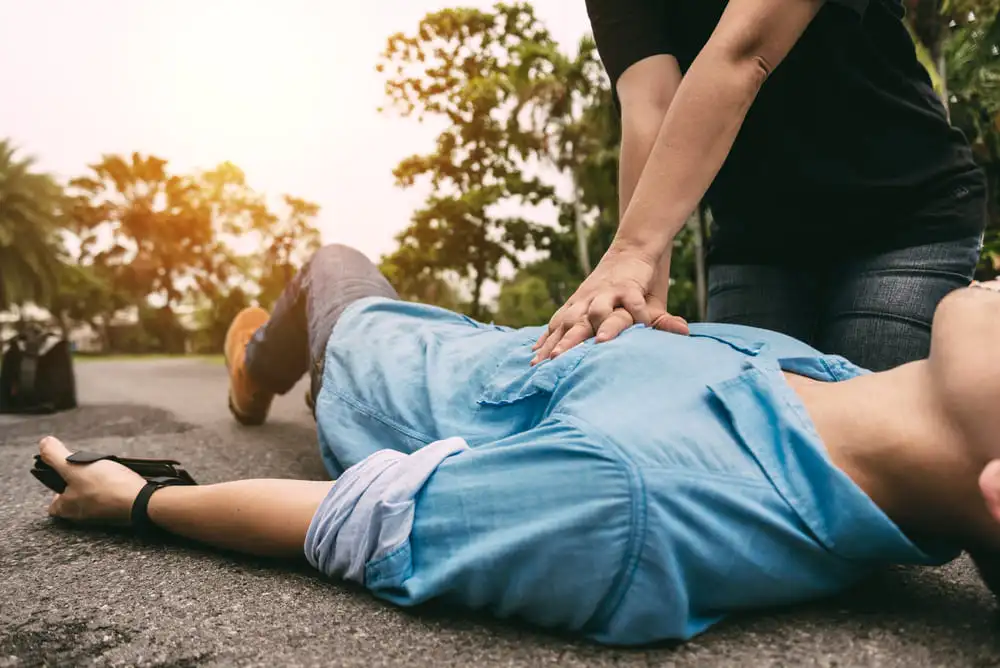When Not to Administer CPR: Medical Judgment Must Always Guide Heartstrong Heroes
In a moment of heart emergency, when a life hangs in the balance, heroes emerge. These are the individuals who fearlessly rush in to save the patient. These first responders are who we like to call Heartstrong Heroes.
They are most often likely to be trained in Cardio Pulmonary Resuscitation (CPR) to save precious lives with their immediate aid. They are the embodiment of courage, compassion, and unwavering dedication.
What if, in some circumstances, the instinct to continue CPR is not the best decision, but instead, it requires restraint, wisdom, and an understanding of the broader picture?
Join us as we explore a critical aspect of CPR – knowing when not to administer it. It’s a journey through ethical issues, medical considerations, and the profound responsibility of making life-and-death decisions.
How is CPR so important and yet not advised in certain circumstances?
CPR is a critical and, in many cases, life-saving procedure, yet its universal application is not always warranted. The importance of CPR is undeniable, as it serves as a rapid response to revive individuals in cardiac arrest, preventing brain damage and potential death.
According to The American Academy of CPR and First Aid, however, its appropriateness hinges on several factors – and we have to recognize that, in specific situations, it may not be the right course of action.
CPR’s significance rests in its ability to bridge the gap between life and death when performed promptly and skillfully. It helps circulate oxygenated blood to essential organs and the brain and keep them at minimum damage levels – and thus buy time until professional medical help arrives.
Yet, CPR continuation may sometimes not align with the patient’s best interests.
Individuals trained in CPR must recognize that medical advice should be the most crucial guide on whether to continue with CPR if it has been offered to patients.
This often becomes available when medical help arrives on the crisis scene. Until then, however, CPR-trained individuals – those with the determined “Zinda Dil” – should not stop their efforts to revive the patients.
8 key factors doctors consider when making CPR continuation decisions
1. Patient’s wishes or advance directions:
Healthcare providers and rescuers must always consider and respect the patient’s wishes. According to Cleveland Clinic, these may be documented in some countries in advance directives, such as Do Not Resuscitate (DNR) orders. In other countries, without the DNR provisions, patients’ living wills may state their choices. These legal documents are crucial guides in determining the appropriateness of CPR. But CPR must be continued until a doctor says it has to be stopped by the patient’s request.
2. Patient’s medical history:
Doctors must thoroughly review the patient’s medical history. This includes understanding any underlying conditions, comorbidities, and the reason for the cardiac arrest. Certain medical conditions may affect CPR’s suitability and potential success if continued. If so, doctors must convey the instructions to continue or stop CPR.
3. Cause of cardiac arrest:
According to James Roland, writing in Healthline, the cause of cardiac arrest is a critical factor. CPR may be more effective in cases of sudden cardiac arrest due to a reversible cause, like ventricular fibrillation, compared to cardiac arrest resulting from end-stage organ failure or a terminal illness. Again, it must be the doctor’s call to decide if CPR can be stopped.
4. Duration of cardiac arrest:
Evaluating the duration of the cardiac arrest is essential. Research consistently shows that the chances of successful resuscitation decrease significantly with each passing minute. When medical help cannot arrive quickly, and if prolonged cardiac arrest continues despite CPR, doctors may decide that the likelihood of a positive outcome has diminished beyond the scope of help. This is often a difficult decision for doctors to make and for helpers to give up on their efforts made so far.
5. Medical futility:
According to CPR Select, a doctor arriving at the scene of a medical urgency must decide on the potential futility of CPR. In situations with minimal chance of achieving a successful outcome, or where the patient is in the advanced stages of a terminal illness, performing CPR may not be in the patient’s best interest. In such cases, the doctor needs to convey this decision to the CPR givers – and the conclusion of the doctors has to be adhered to by all those who have been eager helpers.
6. Quality of life:
The patient’s overall quality of life – and potential to live a reasonably healthy life after a heart attack – are critical considerations for doctors to judge. In cases where CPR may successfully restart the heart but result in a significantly diminished quality of life, doctors may weigh the benefits against the potential harm. There are lessons to be learned here for those trained in CPR, who may have to listen to the doctor against their own instincts to “try a little more” to help the patient.
7. Family and caregiver input:
In some cases of patients suffering cardiac arrests, while with their families or caregivers outside of their homes, the wishes of the family or the caregiver on whether they would wish for CPR to be given (or not) may be expressed. Yet, the duty of those trained in CPR is to advise and insist on giving chest compressions despite any reluctance from patients’ families. When doctors arrive, they can discuss the patient’s condition, prognosis, and treatment options with the family or caregiver – including the decision to continue or withhold CPR.
8. Ethical and legal considerations:
According to C. A. Marco, writing in the Postgraduate Medical Journal, we must be aware of the ethical dilemmas surrounding CPR decisions and consider the legal aspects, including Good Samaritan laws and the governing State Medical Policies. These considerations may vary by jurisdiction. All these considerations must then be balanced with sound medical appraisals by a doctor before deciding to stop CPR. The doctor’s word would be final. If needed, the doctor should be able to explain to courts or authorities why the decision was taken.
Prioritizing proactive heart care is something everybody must practice
Proactive heart care can guide a doctor’s CPR continuation or stoppage decisions. When patients actively prioritize their heart health through regular exercise, a heart-healthy diet, and consistent medical check-ups, they reduce the likelihood of sudden cardiac events.
Regular health screenings for obesity, cholesterol, diabetes, and hypertension are always good, as these ailments, along with other hereditary factors, can have a multiplicative impact on heart health. Doctors always ask people to keep their blood pressure under observation, check their cholesterol levels, monitor signs of diabetes, and persist with prescribed obesity management.
In summary
There are two useful rules to follow for heart health. One, before issues escalate into emergencies, preemptive heart care is always emphasized as the best way for patients to stay as secure as possible from emergencies. Two, during cardiac crises, CPR given by trained hands is most crucial, but doctors must have the final say on CPR duration or stoppage.
Everyone can be a heart champion ready to help others. First, advise heart patients to take good care of themselves to avoid emergencies. Then, make sure to get trained in CPR if you haven’t already. Encourage others in your circles to do so. Be a Heartstrong Hero.
References
- The American Academy of CPR and First Aid. “When Should You Stop Performing CPR on a Victim?”. Accessed: September 18, 2023. https://www.onlinecprcertification.net/blog/when-should-you-stop-performing-cpr-on-a-victim/
- Cleveland Clinic. “Do-Not-Resuscitate (DNR).” Accessed: September 18, 2023. https://my.clevelandclinic.org/health/articles/8866-do-not-resuscitate-orders
- Roland, James. Healthline. “When to Do CPR for a Heart Attack.” Accessed: September 18, 2023. https://www.healthline.com/health/cpr-for-heart-attack
- CPR Select. “When To Perform CPR: 7 Situations When to do CPR?” Accessed: September 18, 2023. https://www.mycprcertificationonline.com/blog/when-to-perform-cpr
- Marco, C A. Postgraduate Medical Journal. “Ethical issues of resuscitation: an American perspective.” Accessed: September 18, 2023. https://pubmed.ncbi.nlm.nih.gov/16143694/









